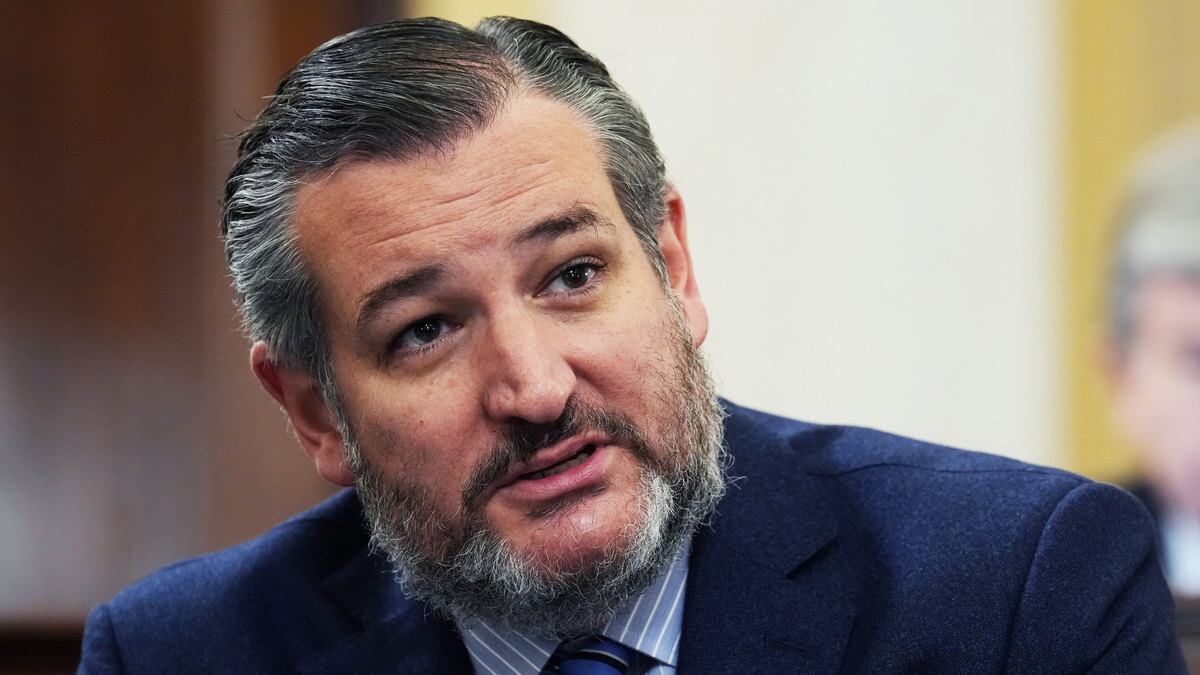Federal law says candidates can only give other candidates $2,000 per election. But Sen. Ted Cruz (R-TX)—in classic Cruz fashion—may have found a loophole.
Last month, Cruz poured a staggering $137,183 into the House campaign for Cassy Garcia, his former staffer turned Texas congressional candidate.
Along the way, the tendentious Texan—who regularly pushes campaign finance boundaries and is currently challenging the federal election regulator in the Supreme Court—broke new ground, assuming unlimited spending powers and raising campaign finance red flags.
Cruz’s last-minute blitz paid off. His six-figure spending helped Garcia get through the Republican primary to a May 24 runoff. And Cruz’s support may have played a pivotal role, because none of Garcia’s campaign finance reports show a dime spent on promotion—no advertising, no digital marketing, no signs, no mailings, no call lists, no get-out-the-vote efforts. Just a $600 website.
For some reason, Cruz filled that gap. By the time the ballots were counted, he had spent more money supporting Garcia than she had even raised.
If this seems strange, it is. Experts say the move appears unprecedented. And it may cause other candidates with fat bankrolls and strong personal preferences—candidates like Donald Trump—to reconsider how they throw their weight around.
If it seems illegal, technically, it probably isn’t.
At least, it probably isn’t illegal as long as the senator and his former deputy state director never “coordinated” on the spending—a broad term, which also applies to candidates and super PACs.
Here’s how he did it.
Federal rules restrict the amount of money that campaigns can give directly to each other, to a surprising degree: $2,000 for the primary, and another $2,000 for the general. That’s less than the limits on individual donors, who can give a combined total $5,800.
But the rules don’t put a cap on how much money campaigns can spend on indirect types of support, known as “independent expenditures.” This means that a campaign can theoretically spend millions of dollars on advertisements or marketing efforts to back a friend’s campaign—or to attack a friend’s opponent.
Essentially, Cruz cut out the middleman. His campaign committee, “Ted Cruz for Senate,” shoveled tens of thousands of dollars into the kinds of promotional efforts that those $2,000 donations would typically help fund, the same way a super PAC supplements an official campaign.
The spending kicked off on Feb. 23, a week before primary day, when Ted Cruz for Senate shelled out the first $64,800: $40,000 on GOTV door-knocking; $24,500 for two media buys; and a final $300 for printing and design. The next day, the campaign dropped $40,000 on web services, $9,306 on printed materials, and $16,200 on GOTV phone calls and text messages. The spree wrapped up with another $5,000 media buy on Feb. 25, and an $1,877 kicker for media and travel on Feb. 28.
The campaign, however, had a problem. The tactic was so unusual that the Federal Election Commission didn’t actually have a way to report it. Instead, campaign treasurer Cabell Hobbs filed “miscellaneous” forms, complete with a particularly Cruzian bit of commentary—“in light of the FEC’s failure to provide a mechanism for authorized committees to report independent expenditures supporting candidates in other races.”
While Cruz waited for the last week to jump in, Garcia’s campaign hadn’t been around long. She only filed with the FEC in mid-December, and raised about $128,000 before the primary—about $10,000 less than Cruz spent.
Of that $128,000, the Garcia campaign’s available reports show only $11,738 in expenses, for accounting, research, credit card processing, a trade name, and $600 for web design. Cruz’s leadership PAC nearly covered that bill, too, with its $10,000 New Year’s Eve gift.
And while it’s likely that Garcia did make more expenditures on her own behalf in the 20-day gap between her last available report and primary day, there are gaps. For instance, the only Garcia campaign ads in Facebook’s political ad library are ones the Cruz campaign bought. Google’s ad library has no hits at all. And even if Garcia drained her account, she couldn’t have spent as much as Cruz did.
Caleb Burns, a campaign finance law expert and partner at Wiley Rein, told The Daily Beast that, while his approach is novel, Cruz appears to be within the law.
“A campaign should be free to engage in independent expenditures on behalf of other candidates based on both constitutional concerns and the FEC’s existing regulations,” Burns said, noting that he’d explored the question even before the Supreme Court’s Citizens United ruling blew the doors off political fundraising and spending.
Burns observed that this type of campaign spending is “exceedingly rare,” and offered an explanation—candidates want to hold onto their campaign cash, because it’s the only money they can spend on their own election efforts.
“Candidates typically reserve campaign funds for themselves and rely on other vehicles to make independent expenditures,” Burns said. “For example, candidates and officeholders could use their leadership PACs—which cannot be used to support the candidates’ or officeholders’ own elections—to make independent expenditures in support of other candidates. And since Citizens United v. FEC, allied super PACs and other organizations are making independent expenditures too.”
To be sure, campaigns have a number of channels to farm out cash to their allies. But as political fundraising continues to smash records, juggernauts who find themselves with more money than they can spend—think Sen. Lindsey Graham (R-SC) and challenger Jamie Harrison’s $240 million bonanza in 2020—might see a new appeal in the Cruz approach.
Brett Kappel, a campaign finance law specialist at Harmon Curran, pointed out that this might most likely prove true where a candidate has a personal stake in another race.
“It remains to be seen if this becomes a trend. It may be tempting for members of Congress with a national fundraising base to weigh in on races in which they have a personal interest for or against a specific candidate,” Kappel said.
Because the FEC hasn’t established proper reporting requirements, he added, an outside candidate might be able to tip the scales “before the voters ever know who is funding” the independent expenditures.
The key word, however, is “independent.” Some of Cruz’s spending, Kappel said, raises questions about how independent it is, exactly.
Candidates can’t coordinate on these expenditures—and that includes discussion, assent, and suggestions, and it extends beyond candidates to intermediaries.
Cruz and Garcia exhibit overlap. Cruz’s Facebook spending promotes a joint rally organized by his campaign, with an EventBrite link, and a post on Garcia’s official Facebook page links to the same rally and same EventBrite invitation—which lists Ted Cruz for Senate as the organizer.
Additionally, Cruz and Garcia, who have a close history, also both paid a common vendor for “design” work—a small Texas company called Birdwell Communications, which only two other federal committees have paid.
“The use of a common vendor would be seen as a red flag indicating the possibility of coordination between the two campaigns,” Kappel said.
The Cruz and Garcia campaigns did not immediately reply to a request for comment.










